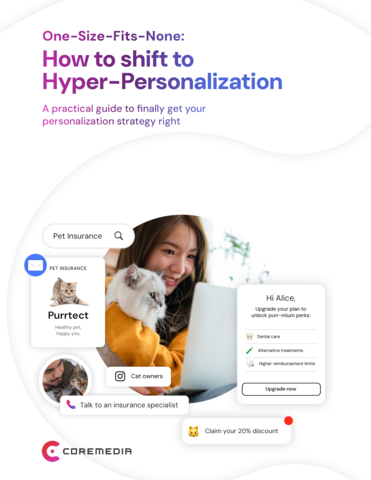Generating value from generative AI in 2024

Grant Parker at Mediaocean explains how generative AI is delivering increasing value in the AdTech sector
AI is huge…but you already know that. As the number one conversation point at every industry event, in every webinar, and on every tech leader’s blog for going on a year, you probably feel, if anything, pretty overwhelmed with information about generative AI and its capabilities.
But as any technology is destined to do, generative AI continues to evolve. Marketers and advertisers therefore need to be prepared to adapt the ways in which they’re using AI into next year, without getting caught up in its seemingly endless hype cycle.
Heralded as the ‘year of AI’ before it even began, 2023 was a significant turning point for AI in the ad industry. ChatGPT was the fastest app to reach 100 million users mere months after its launch, inspiring similar versions like Bing Chat and Google’s Bard. Its impact was apparent in the results of Mediaocean’s 2023 Mid-Year Advertising Outlook Report, which found generative AI to be the number one most important consumer trend of the first half of the year.
So, what are the best ways that the ad industry can ad-opt and ad-apt to AI right now and into 2024?
The generative AI giant
There are endless ways to use Generative AI technology and endless industries to use it in. For marketers, the top area in which respondents saw the most potential with generative AI was copywriting. And for good reason – tools like ChatGPT vastly reduce the time taken to produce both long and short-form content, with marketers able to select and compile information from various sources, shorten text into succinct summaries, edit for tone of voice, and optimise copy for SEO by conducting rapid keyword research and content clustering.
And the speed and power of generative AI is not only useful in content creation – its second biggest area of potential was found to be data analysis, with many marketers and advertisers utilising natural language processing tools to find insights and patterns in large datasets, and find them faster than ever before. These insights can be extracted to continually optimise text and ads based on campaign performance, enable greater personalisation and targeting, and help advertisers comply with tightening regulations.
With audience signals waning due to increasing signal loss, creative is becoming a key variable in improving campaign performance. In light of this, creative testing has emerged as an essential use of generative AI and a growing business necessity for marketers.
This is particularly poignant given the continued environment of economic uncertainty and budget pressures, which is motivating marketers to improve performance to drive efficiencies across the board. Respondents stated that performance-driven media and measurement and attribution capabilities were the two most critical investments for marketers, pointing to an enduring industry need for creative testing and automation.
New year, same roadblocks?
But, of course, where there is new innovation there will always be hurdles. ChatGPT is currently only able to create responses based on the information it was trained on: huge swaths of data from the internet that can include misinformation, biases, and outdated information, all of which require a human professional to comb through and vet.
As well as its increased potential for disinformation, generative AI has been accused of creating generic-sounding and emotionless copy – unsurprising when you consider it lacks any original thought, lived experiences, or emotions to base its responses on.
Clearly generative AI cannot be compared to human marketers when it comes to building a relationship with customers, which has become a necessity for marketers given the success of formats like influencer marketing.
However, marketers and advertisers cannot let any sceptical reactions towards generative AI cloud their decisions around adopting them. While its capabilities are too narrow to replace human work entirely, there’s great potential to automate menial tasks and give employees more time to work creatively, speeding up the delivery of campaigns.
And as the technology develops, 2024 could also see AI leaders further advance and develop their tools to make collaboration with human creatives far easier, enabling the production of content that combines efficiency and authenticity.
Perfecting the art of artificial intelligence is not something you can improvise, so without a clear strategy on implementing AI next year, marketers and advertisers are at a severe competitive disadvantage.
Those who can use these tools effectively and creatively – to augment, not replace – will maximise what their campaigns can achieve in 2024, illuminating the future for the entire industry.
Grant Parker is CRO at Mediaocean and Flashtalking
Main image courtesy of iStockPhoto.com

Business Reporter Team
Most Viewed
Winston House, 3rd Floor, Units 306-309, 2-4 Dollis Park, London, N3 1HF
23-29 Hendon Lane, London, N3 1RT
020 8349 4363
© 2025, Lyonsdown Limited. Business Reporter® is a registered trademark of Lyonsdown Ltd. VAT registration number: 830519543





